Analog to digital converters (ADCs) are tools which transform analog signals into their digital equivalents. They are used in a variety of electronic devices, including computers, cell phones, and radios. ADCs come in a variety of shapes and sizes, and they can be used for a variety of purposes. In this blog post, we’ll take a closer look at what ADCs are and how they work. Stay tuned for more!
What Is Analog-To-Digital Conversion (ADC)?
An Analog-to-Digital Converter system, generally known as an ADC system, is composed of a single chip that transforms analog signals into digital outputs. This allows for the transfer of information from one form to another, allowing for better communication between electronic devices.
Analog signals are generally more accurate than digital signals due to their ability to represent a wide range of values with a single sample. However, this accuracy comes at the cost of requiring higher bandwidths and power consumption than digital signals do. By converting an analog signal into its digital equivalent, it becomes possible to transmit data over long distances without losing accuracy or performance.

Ultimately, ADCs can be used to improve communication between devices, allowing for the efficient transfer of information. By converting analog signals into their digital equivalents, it becomes possible for devices to better understand and process incoming data, resulting in improved performance and accuracy.
ADCs are commonly used in a variety of applications including audio and video transmission, medical imaging, radio frequency communications, and industrial automation. Due to their ability to accurately convert analog signals into digital ones, they have become an essential tool in modern electronics. Without ADCs, many of today’s technological advancements would not be possible. [1]
Why Is Digitization Important?
Digitization is important because it makes it possible to store, analyze and process data in digital form more efficiently than analog form. Digitization also allows for better communication of data between devices, systems and people. Additionally, digitizing information can make processes faster, increase accuracy and eliminate potential errors caused by human intervention. By converting analog signals into digital ones, the amount of information that can be stored is greatly increased. Digital signals are also easier to manipulate and control than their analog counterparts. With the rapid advancement being made in computing power and storage capacity, digitization is becoming increasingly important as a means of improving efficiency in many areas.
The use of Analog-to-Digital converters (ADCs) enable us to take analog information from sensors, such as temperature or pressure, and convert it into a digital form that can be stored and manipulated. This makes it easier to process the data in various ways, such as displaying results on a digital screen, sending the data over a network or simply analyzing the results with suitable software. Additionally, ADCs are used in audio applications where they are used to sample and encode sound so that it can be transmitted digitally. By digitizing analog signals, the amount of information that can be stored is vastly increased and more complex systems become possible.
Overall, digitization has revolutionized the way we interact with technology by making processes faster and more efficient. The use of Analog-to-Digital Converters (ADCs) have enabled us to convert analog information into digital form, allowing us to store and manipulate data more effectively. Digitization has become essential in the modern world, as it allows us to take complex processes and make them simpler, quicker and more accurate.
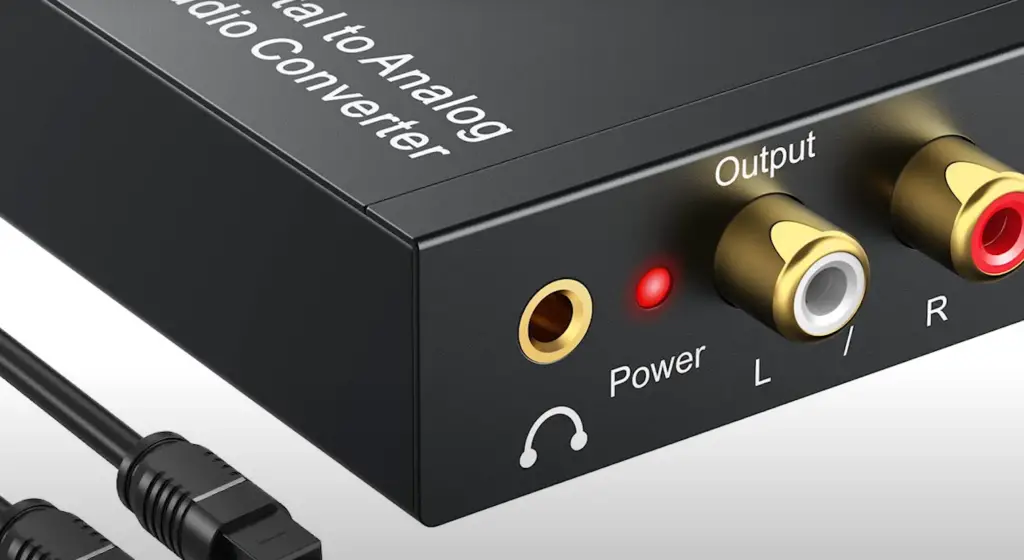
What Is The Nyquist Theorem And Why Is It Important?
According to the Nyquist-Shannon Sampling Theorem, a digital signal must be sampled at least twice as often as the highest frequency component of its corresponding analog signal in order for it to be reproduced accurately. This means that if you sample an audio signal with a frequency range of 20 Hz to 10kHz, then you need to have a sampling rate of at least 20kHz for accurate A/D conversion. Thus, the Nyquist Theorem ensures that information will not be lost when converting from analog to digital signals. Without this rule, detectable errors would appear in sampled data and it would be impossible to accurately recreate the original analog waveform.
By understanding the Nyquist Theorem and properly setting the sampling rate of a digital signal, engineers are able to effectively convert analog waveforms into digital signals with little information loss. This process is used in many applications such as audio-video recording, telecommunications, military communications, medical imaging, and scientific instrumentation. Knowing this theorem can help ensure that A/D conversion is accurately performed without any significant data distortion. [2]
How The Nyquist Theorem Works for A/D Conversion
When converting an analog signal into digital format with an Analog to Digital Converter (ADC), it is important to sample at rates that are higher than those dictated by the Nyquist Theorem. This ensures that all of the necessary details in a signal can be retained after conversion and avoids certain types of distortion or aliasing errors which occur when insufficient sampling rate is chosen.
To illustrate this concept, consider a signal with a maximum frequency of 1kHz. According to the Nyquist Theorem, the sampling rate must be at least 2kHz in order to accurately represent the signal when it is converted into digital format. If we were to sample this signal at a lower rate, certain frequencies would not be properly represented and aliasing errors would occur in the digital output.
By understanding how the Nyquist Theorem works for A/D conversion, engineers can design systems that provide reliable, accurate data acquisition and ensure that their applications perform as expected. Additionally, they can identify any potential issues before they become an issue in production or operations.
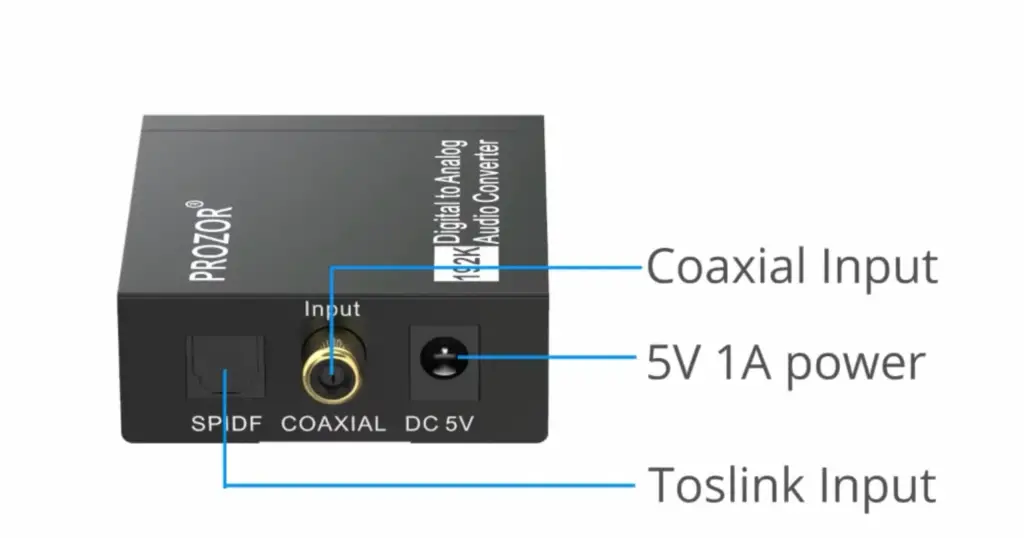
Importance Of Analog-To-Digital Conversion
Analog-to-digital conversion is essential for modern technology to be able to capture and process the huge amount of data that is generated by our world today. Without this conversion, it would be impossible for computers, signal processors, and other digital systems to interpret analog signals into a form that is understandable. The importance of analog-to-digital converters lies in the fact that they enable us to make use of analog information like sound or images in a way that can be manipulated with precision and accuracy.
For example, when you watch a movie on your computer or TV screen, you are essentially watching an image created from thousands of individual pixels which have been converted from an analog signal using an A/D converter. Similarly if you play a sound through your speakers, it is the result of an analog signal being converted into a digital one. In order to do this conversion, the analog-to-digital converter must first measure the amplitude of each sample of the original signal and then convert it into an equivalent binary code.
Analog-to-digital converters are also used extensively in medical imaging and scientific research. These converters allow powerful microscopes to capture images with high resolution and accuracy, while making sure that any noise or distortion introduced by the electronics does not affect the final image. Similarly in medical imaging, A/D converters can be used to detect subtle changes in vital signs such as heartbeat or breathing rate which can be used to diagnose health conditions. [3]
The Future Of Analog-To-Digital Conversion
Analog-to-digital converters are becoming increasingly important as the demand for digital technologies rises. With new and improved analog-to-digital conversion techniques, it’s easier than ever to convert analog signals into digital representations. This allows us to capture real world scenarios and data more accurately than ever before. It also opens up a world of possibilities for applications such as virtual reality, artificial intelligence, robotics, and image recognition.
As technology progresses, so too does the development of analog-to-digital converters. Improvements in speed and accuracy will continue to make them even more useful in our lives. For example, with faster ADC speeds we’ll be able to better process audio signals from music production or from speech recognition systems.
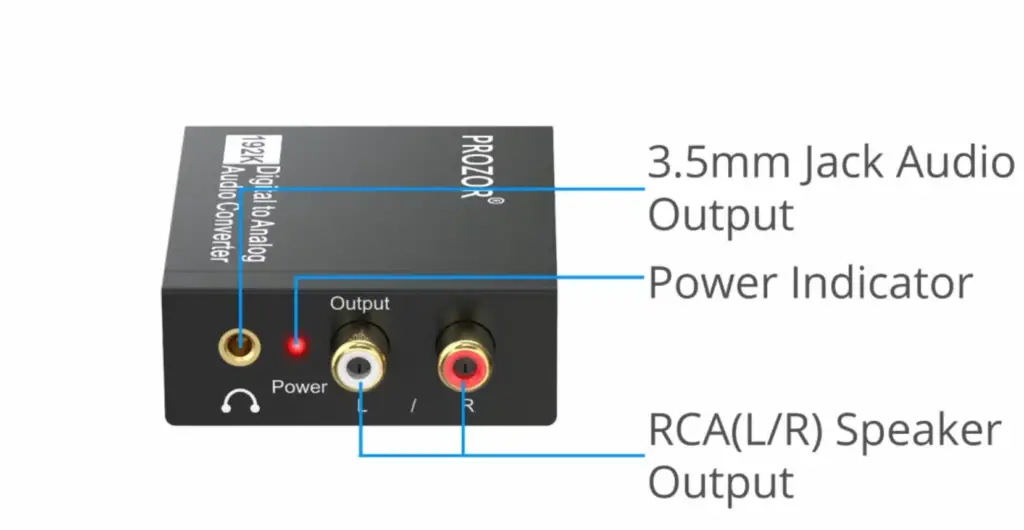
ADC Performance Factors
Analog to Digital Converters (ADCs) are an important component in many digital systems. Their performance is critical in ensuring accurate results and reliable operation. The performance of ADCs can be affected by a variety of factors. These include the sampling rate, linearity, resolution, dynamic range, offset error, gain error, and noise figure.
The sampling rate of an ADC determines how often it converts analog signals into digital ones. A higher sampling rate generally provides better results but requires more power consumption. In addition, faster sampling rates may increase distortion or reduce the accuracy of the converted signal due to aliasing effects.
Linearity is another important factor for ADC performance. This is a measure of how closely the converter follows its intended line of linearity. A higher linearity indicates that the ADC is capable of accurately representing signals by providing input voltages with corresponding output codes.
Resolution is another important factor for analog to digital converters. This indicates how many bits are used to represent each sample and determines the accuracy of the converted signal. Generally, higher resolutions provide better results as there can be more bits used to represent each sample.
Dynamic range describes how much voltage difference between two levels an ADC can handle while still producing an accurate result. Higher dynamic ranges allow ADCs to accurately convert a wider range of voltages into digital signals without sacrificing accuracy or resolution.
Offset error is a measure of how much error in the output voltage an ADC produces when the input voltage is zero. This error can be caused by internal circuits and should be minimized as much as possible.
Gain error is another factor that affects ADC performance. It is a measure of how accurately an analog signal is converted into a digital one, with higher gain meaning more accurate conversion.
Finally, noise figure is a measure of how much noise the ADC introduces into its output signal compared to its input signal. Lower figures indicate better performance and are critical for high-precision applications such as medical imaging or military communications systems.
All these factors can affect the performance of analog to digital converters and must be taken into account when designing systems which rely on them for reliable operation. [4]
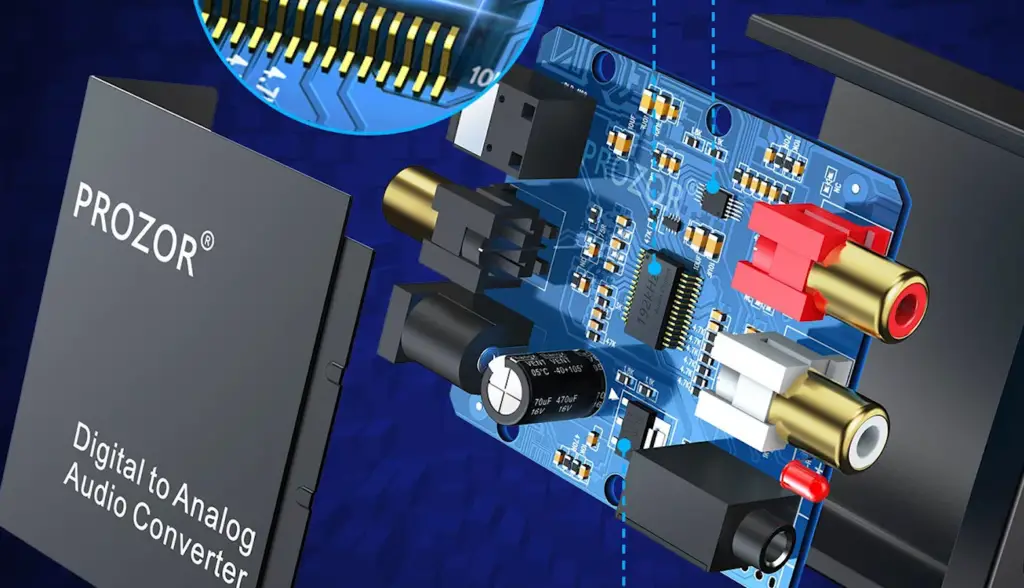
Common Types of ADC
Dual Slope A/D Converter
This type of A/D converter is based on the integration principle. The input signal to be converted is applied for a fixed time period, during which it charges an integrating capacitor. At the end of this period, the voltage across the capacitor will be proportional to the amplitude of the input signal and can then be measured.
Flash ADC
In this type of converter, a set of comparators measure different levels of the input analog signal simultaneously and generate corresponding digital outputs which are encoded into a binary number. It is typically used when high speed and accuracy requirements are needed.
Successive Approximation ADC
This type of A/D converter works by comparing successive approximations to an unknown input voltage with reference voltages, and then digitally encoding the result. Once the reference voltage is close enough to the input, a binary representation of it is produced which can be used for further analysis. It is more accurate than flash ADC but requires longer conversion times.
Sigma-Delta Converter
This type of A/D converter works by using oversampling and noise shaping techniques to convert an analog signal into a digital one with high resolution. The resolution of this type converter is higher than that of other types, making it more suitable for applications where accuracy is important.
Digital to Analog Converter (DAC)
A DAC converts a digital signal into an analog one. The most common type of DAC uses resistors or capacitors to create different voltage levels which generate the output analog signal. The resolution of a DAC is determined by the number of bits used to represent the digital input. The higher the bit count, the higher the resolution and accuracy of the output analog signal.
Semi-flash ADC
This type of ADC is similar to the flash ADC, but it uses fewer comparators than a full-flash converter. The main advantage of this type of converter is its speed, since only half of the comparators need to be activated for each conversion. It is also more cost effective than other types of A/D converters.
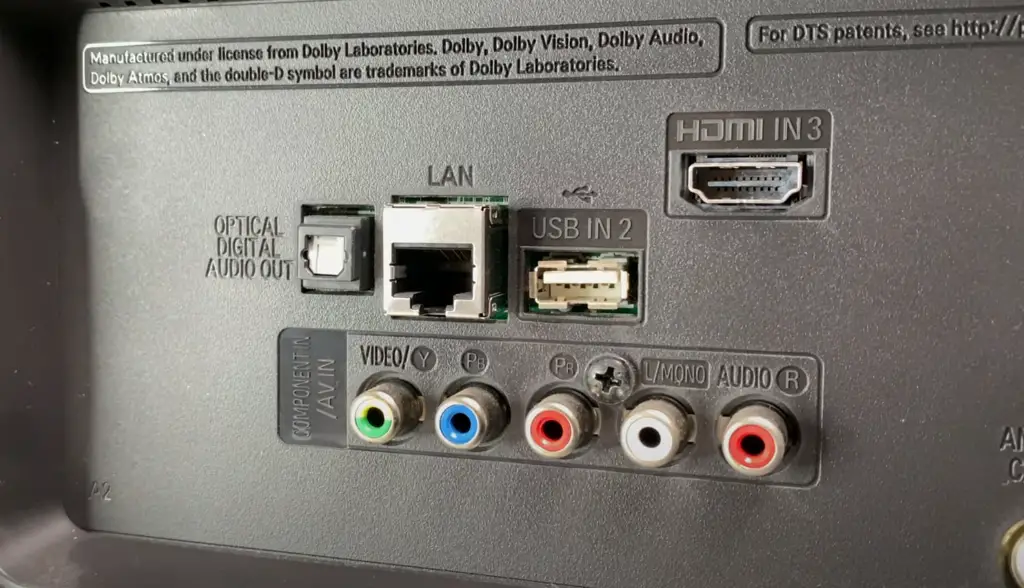
Pipeline ADC
This type of A/D converter works by dividing the sampling time into several stages and performing multiple conversions on different portions of the input signal in parallel. This allows for faster and more efficient conversion compared to traditional methods. Pipeline ADCs are useful for applications such as digital video processing that require high resolution and high speed operation. [5]
Analog to Digital Converter Examples
They are used in many different applications, including audio and video recording, communication systems, medical devices, sensors, and control systems. Common ADC examples include voltage-to-digital converters, thermocouple-to-digital converters, and amplitude modulated (AM) radio receivers.
In the case of AM radio receivers, an ADC may be used to convert the incoming signal from an AM frequency modulation (FM) down to a baseband signal that can be handled by the receiver’s circuitry. The ADC will then take this baseband signal and convert it into numerical values representing the information contained within it. This information can then be used to control the receiver, such as adjusting its volume or tuning in a specific station.
ADCs may also be used in medical devices, such as electrocardiograms (ECGs) and other monitoring equipment. ECGs use ADCs to monitor the electrical signals of the patient’s heart and convert them into digital data for further analysis. Similarly, sensors may also utilize an ADC to detect changes in physical conditions, such as temperature or pressure, and translate that analog signal into a digital one suitable for processing by computers.
In addition, many communication systems make use of ADCs to encode digital bits from analog signals sent over telephone lines or radio waves. By using an ADC these binary values are converted into a numeric value that can be interpreted by the receiver.
Finally, ADCs are also used in audio and video recording equipment to convert analog signals from microphones and cameras into digital signals suitable for storage and playback on digital devices. This allows for an accurate replication of the original signal as well as higher quality recordings.
In summary, Analog to Digital Converters are incredibly versatile electronic devices which have many applications across various industries. From medical monitoring systems to communication systems, ADCs offer a reliable way of converting analog information into digital data that can be easily processed by computers. This technology continues to advance with newer and more powerful converters being developed all the time.

ADC Testing Methodology
Analog to Digital Converter (ADC) testing is an important part of quality assurance for analog and mixed-signal designs. An ADC is used to take a continuous range of analog signals and convert them into discrete digital values. To ensure the accuracy and reliability of these conversions, it’s essential to test ADC performance over time. A comprehensive ADC testing methodology should include verification at all stages of development, both for individual components as well as when integrated with other components in the system.
At the beginning of any design process, optimization tests are conducted in order to determine the best operating conditions for each specific application. These can be used to tune the resolution, sampling rate and linearity of an ADC circuit.
ADC performance can also be evaluated with a series of static tests, which measure the signal-to-noise ratio (SNR), total harmonic distortion (THD) and signal-to-noise plus distortion ratio (SINAD). Additionally, dynamic tests such as throughput rate and latency are important to consider when dealing with systems that process large amounts of data.
Finally, it’s important to conduct system level testing in order to evaluate how well an ADC performs in its intended environment. This includes temperature, voltage and power consumption tests, as well as verification that the system is able to accurately convert analog signals into discrete digital values under varying conditions.
Applications of Analog to Digital Converter
These include medical imaging, audio and video recording, telecommunications, and more. In a medical imaging application, an analog to digital converter converts the analog signals from x-rays into digital images that can be stored on a computer. Similarly, in audio and video recording applications, A/D converters convert the continuously varying electrical signals into discrete numbers that are then saved as digital audio or video files for storage and playback.
In telecommunications applications, A/D converters are used to convert incoming analog telephone signals into digital data so it can be transmitted over long distances by fiber optic cables. This allows us to make voice calls across the globe with clarity and speed.
Additionally, A/D converters are also used in control systems to accurately measure real-world conditions and then convert them into digital data that can be read and processed by a computer. This is crucial for industrial automation processes and robotics, as it allows machines to operate accurately and efficiently.

Overall, the applications of analog to digital converters are far-reaching, making them an essential part of many industries today. With advances in technology, A/D converters will continue to become even more important in our everyday lives. [6]
Multiplexed or Single ADC per Channel?
When it comes to analog-to-digital conversion, there are two main approaches: multiplexed and single ADC per channel.
Multiplexed ADCs have a multitude of inputs that can be switched back and forth in rapid succession. This allows the ADC to convert data from many different sources at the same time, making it ideal for applications requiring simultaneous sampling or measurement of multiple signals. However, since the signal must travel through the entire system before being converted, multiplexing can introduce significant noise and distortion into your measurements if not done correctly.
A single ADC per channel approach is simpler and more direct than a multiplexed solution as each input has its own dedicated ADC to convert its signal directly without having to go through any switching. This results in cleaner measurements and better accuracy, however, it is more expensive than multiplexing and may not be feasible for applications requiring simultaneous sampling of many different signals.
Ultimately, the type of analog-to-digital conversion you choose will depend on your application’s specific needs. If you need to sample a large number of signals at once or have tight accuracy requirements, then a single ADC per channel approach may be best for you. On the other hand, if your budget is limited or noise tolerance is relatively high then multiplexed ADCs may provide an adequate solution. Ultimately, the choice between multiplexed and single ADC per channel depends on your system’s specific requirements.
What is the Sampling Rate?
It determines how often the ADC will take a measurement and convert it into a digital value. The higher the sampling rate, the more accurate the conversion will be and the better quality of output from the ADC. The most common sample rates are 8 kHz, 22.05 kHz, 44.1 kHz, 48 kHz and 96kHz. Depending on your application, you can choose any one of these sample rates to ensure that you get the best possible conversion results from your ADC. Furthermore, some ADCs also offer adjustable sample rates for further customization depending on your needs.
It is important to note that all audio signals are not equal in terms of their frequency content. For example, a high-frequency signal contains more information than a low-frequency one. To ensure that all the frequencies in a signal are accurately converted, it is important to use an ADC with a sample rate that is high enough to cover the highest frequency present in the signal. Otherwise, some of the information contained within the signal can be lost during conversion and result in poor quality output from the ADC.

When selecting an analog to digital converter for your system or project, it is important to choose one with an appropriate sampling rate depending on your needs. You should also keep in mind other factors such as resolution and accuracy when making your choice.
What is Bit Resolution and Why Does It Matter?
Bit resolution determines the quality of an Analog to Digital Converter’s output. Bit resolution represents how many binary “bits” are used to represent a single sample. The higher the bit resolution, the more accurate and precise the conversion from analog to digital is. Higher bit resolutions also allow for a wider dynamic range which makes it easier to capture subtle nuances in audio which may not be audible with lower bit resolutions. Bits can range from 8-bit (the lowest) to 24-bit (the highest).
Generally speaking, higher bit resolutions give better results; however, they require more storage space and processing power than lower ones do. Additionally, most consumer devices such as smartphones or tablets support only 16-bit sampling rates as standard, so if you want to use a higher bit resolution, you’ll need to invest in specialized hardware.
Ultimately, the bit resolution of your Analog to Digital Converter will depend on your specific needs and the intended application. Knowing what bit rate best suits your project can help you make an informed decision when it comes time to pick out an ADC. [7]
FAQ
What is meant by analog-to-digital converter?
ADCs have many uses, including capturing sound for digital recordings and transmitting signals between different devices or systems. By converting the analog signal to digital, it can be processed with greater accuracy and speed than if left in its original form. In other words, an ADC allows us to measure and process real world information like temperature, light, pressure, and sound digitally.
How does ADC work?
Analog-to-digital converters use two main components to convert analog signals into digital signals: the Analog Front End (AFE) and the Digital Signal Processor (DSP). The AFE is responsible for amplifying and filtering the signal, while the DSP converts it into digital form. The signal is then converted to a series of binary codes representing different levels of voltage or other measures of amplitude. These codes are then decoded to determine the value of the analog signal.
What types of ADC are available?
ADCs come in many different forms, including multi-channel systems, single-channel converters, integrated circuit (IC) solutions, programmable logic controllers (PLCs), and mixed signal solutions. Depending on application requirements such as sampling rate, resolution, dynamic range and speed requirements, one type may be better than another. Additionally, some ADCs can also convert from digital back to analog signals as well.
What are the benefits of using an ADC?
ADCs offer several advantages. They allow for higher accuracy and speed in digital signal processing, since they can more accurately measure real-world information than analog signals. ADCs also reduce power consumption and noise levels, while offering increased flexibility in device design. Finally, they provide a level of reliability that is difficult to achieve with analog technology.
Why do we need to convert analog to digital?
Analog-to-digital converters (ADCs) are important components of many electronic systems and devices. They allow analog signals, such as those produced by physical objects like microphones or sensors, to be converted into digital format for use in digital systems. This makes it possible to capture, process, transmit and store analog signals digitally in computers and other electronic equipment. By converting an analog signal into a digital format, ADCs enable the processing of data quickly and accurately with low power consumption which leads to more efficient operation. Furthermore, having the data stored in a digital format also allows for easier manipulation and analysis than would be possible using only analog signals. For example, this technology is widely used in medical imaging equipment because it can provide high resolution images with very low levels of radiation exposure. Thus, analog-to-digital converters are essential components for making use of analog signals in a digital world.
How does an ADC measure voltage?
An ADC measures voltage by sampling it at different points in time, and then converting each sample into a digital representation of the voltage. This process is known as sampling and quantization. During sampling, an analog signal is measured periodically to determine its amplitude or value at those moments in time. The rate at which samples are taken will affect how accurately the final measurements can be made; higher sample rates result in more accurate readings but also require more processing power. Once the samples have been taken, they are then converted into digital values using something called a quantizer. A quantizer takes these analog values and assigns them numerical codes that represent their level of resolution (or accuracy). Finally, these codes are sent to the output device so that it can interpret and act on the data.
Useful Video: How Do ADCs Work? – The Learning Circuit
Conclusion
Analog to Digital Converters are essential components for modern electronics. They convert analog signals into digital form, allowing devices such as computers and smartphones to interpret them. With the variety of different ADC types available, engineers can find the right converter for any situation. Although ADCs can be expensive, their ability to accurately collect data makes them a valuable investment in many scenarios. For these reasons, Analog to Digital Converters will continue to be an important tool in the world of electronics.
Thanks for reading! We hope this content helps you with your project.
Have a great day!
References
- https://www.electronics-tutorials.ws/combination/analogue-to-digital-converter.html
- https://www.techtarget.com/whatis/definition/analog-to-digital-conversion-ADC
- https://www.elprocus.com/analog-to-digital-converter/
- https://www.techopedia.com/definition/572/analog-to-digital-converter-adc
- https://www.kistler.com/INT/en/analog-to-digital-converter-adc-/C00000092
- https://wiki.analog.com/university/courses/electronics/text/chapter-20
- https://www.arrow.com/en/research-and-events/articles/analog-to-digital-adc-converter-types-and-basic-functions














Leave a Reply